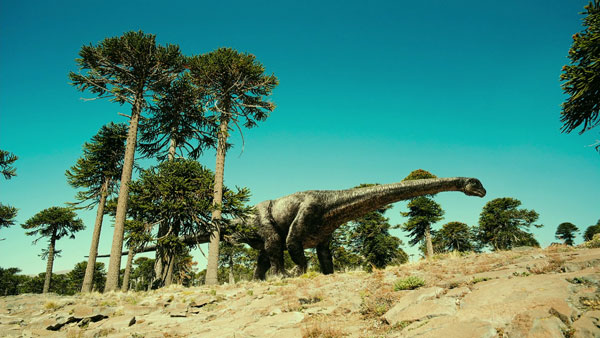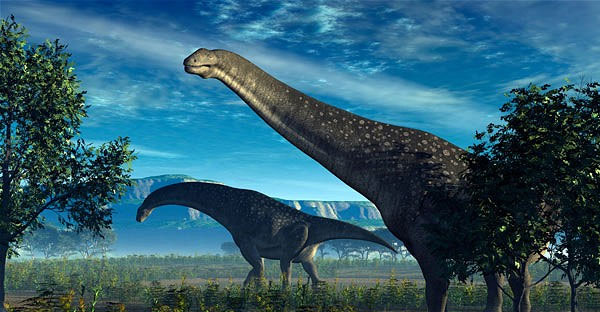Giant size of dinosaurs
Recent research shows that a mouse-sized mammal can grow into giants like elephants after 24 million generations. However, to evolve to great size like dinosaurs, there must be a special influence in this process, especially in plant-eating dinosaurs.
Experts from the University of Cambridge (UK) said that the effective operation of the lungs and the respiratory system, along with the egg laying process, could allow some dinosaurs as high as 30m. In addition, this study has denied the popular theory that animals often tend to be taller in evolution.

In fact, only a few dinosaurs develop in the direction of large mutations in later generations. According to a report published by Proceedings of the Royal Society B , co-author Roger Benson said that flying lizards are a good example of dinosaurs that maintain moderate size throughout evolution. There are still many small herbivores, such as Heterodontosaurus dinosaurs, and small carnivores like Coelophysis.
Benson and his colleague Roland Sookias and Richard Butler analyzed more than 400 dinosaurs from the end of the Permian to the mid-Jurassic Century. Growth diagrams in about 100 million years supported the theory called 'negative diffusion' . This means that many species occur in reverse evolution, not growing in size but smaller. The report shows that the miniaturization process, especially in dwarfism, can take place in only 100,000 generations. This finding contradicts Cope's theory of rules, whereby some groups of organisms, like dinosaurs, tend to be larger in size after many generations. Of course, it is undeniable that there are many large dinosaurs compared to the size of today's terrestrial animals.

'Some biological characteristics of dinosaurs can allow them to be larger than the maximum size of any terrestrial creature , ' Benson said. For example, a skeleton of many dinosaurs contains air, and they are thought to have lungs that function as effectively as birds. These properties make it easier for them to carry a huge weight, allowing the respiratory system and heat exchange to be more effective than other mammals.
Besides, large animals can lay more eggs and reproduce much faster, and this is an advantage to improve the breed. Expert Brian McNab of the University of Florida (USA), not related to this study, said that big dinosaurs have a habit of eating more and moving less. Mr. McNab notes that giant dinosaurs often have a relatively small head compared to body size, meaning they don't chew as much and often let the digestive system do the processing of food. Therefore, the process of eating and drinking does not take much time, allowing them to not move much but still have enough energy.

When asked about the possibilities of terrestrial animals, and even humans today, can evolve to reach the dinosaur-like size of the past, experts say this never happens. Mammals are warm-blooded species, producing lots of internal heat. If the body gets big, they will face the risk of explosion because of overheating. Perhaps so, the ancient creatures, including dinosaurs, are often the intermediate species between hot blood and cold blood. If so, the body temperature mechanism will not allow a giant in the future, according to Benson expert.
- Giant source of dinosaurs
- Discovered a new giant dinosaur twice the size of an elephant
- Giant dinosaurs dug out of the cave
- 70 million years old dinosaurs
- Identify giant carnivorous dinosaurs
- Why are long-necked dinosaurs gigantic?
- Discover new giant dinosaurs
- Earth changed dramatically, giving birth to a series of super-terrifying 'monsters'
- Discover new giant dinosaurs in Russia
- Why do giant dinosaurs give birth to babies?
- Decode secret million years of the most giant monster on Earth
- Argentina discovered dinosaur fossils living more than 200 million years ago today
 'Fine laughs' - Scary and painful torture in ancient times
'Fine laughs' - Scary and painful torture in ancient times The sequence of numbers 142857 of the Egyptian pyramids is known as the strangest number in the world - Why?
The sequence of numbers 142857 of the Egyptian pyramids is known as the strangest number in the world - Why? History of the iron
History of the iron What is alum?
What is alum?